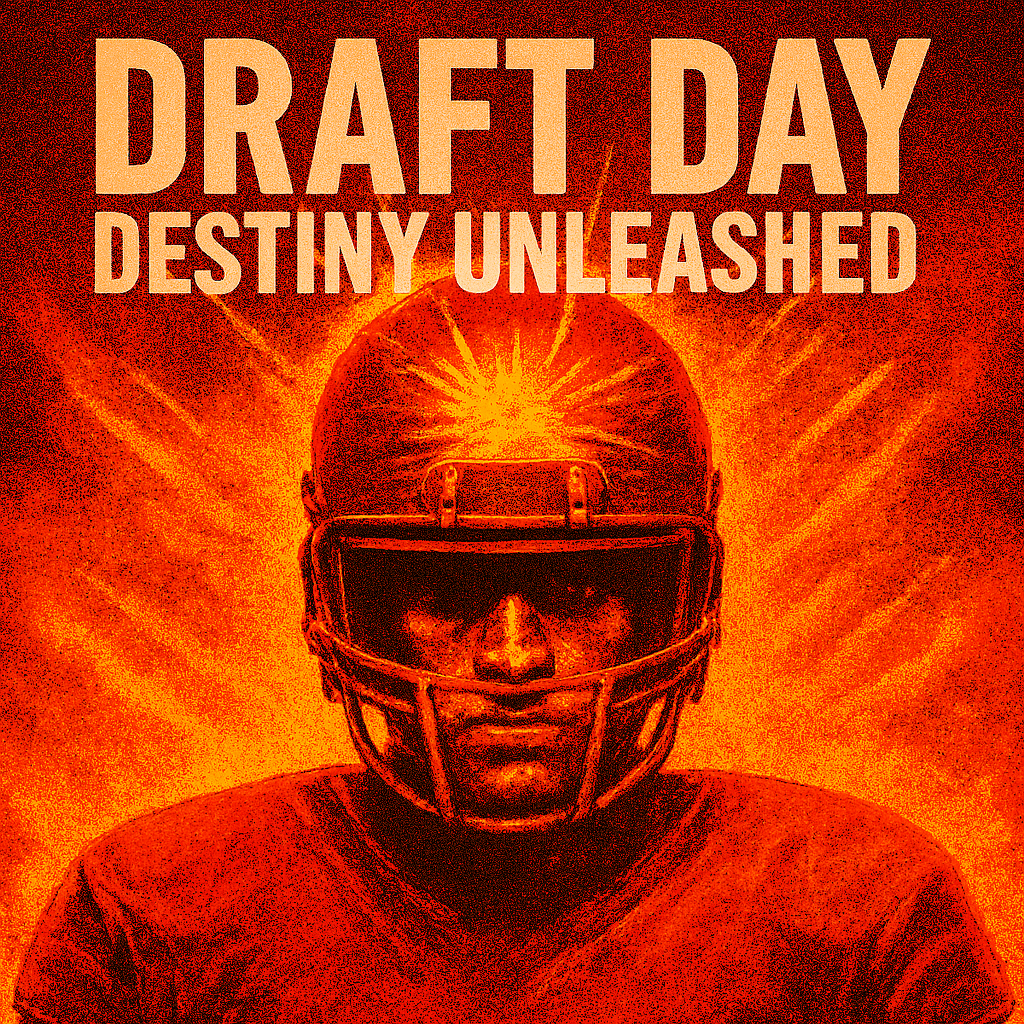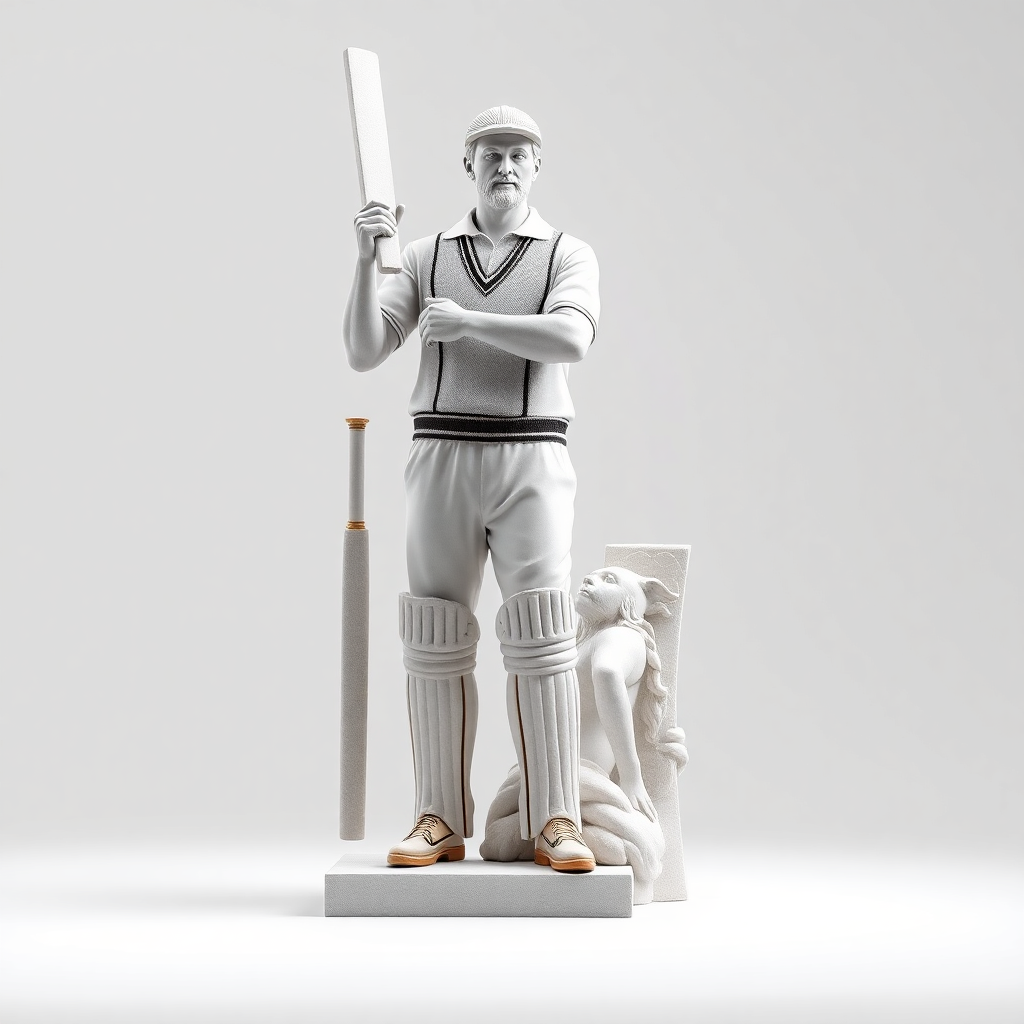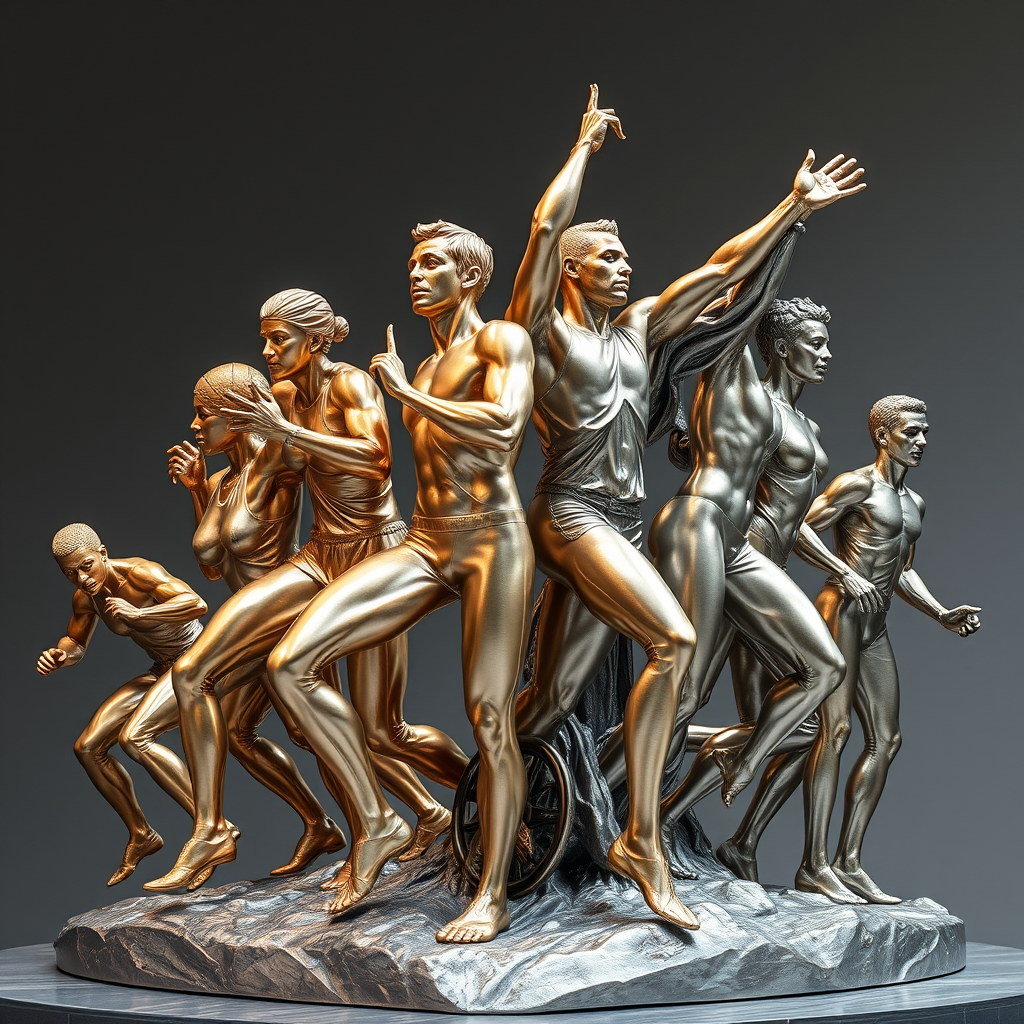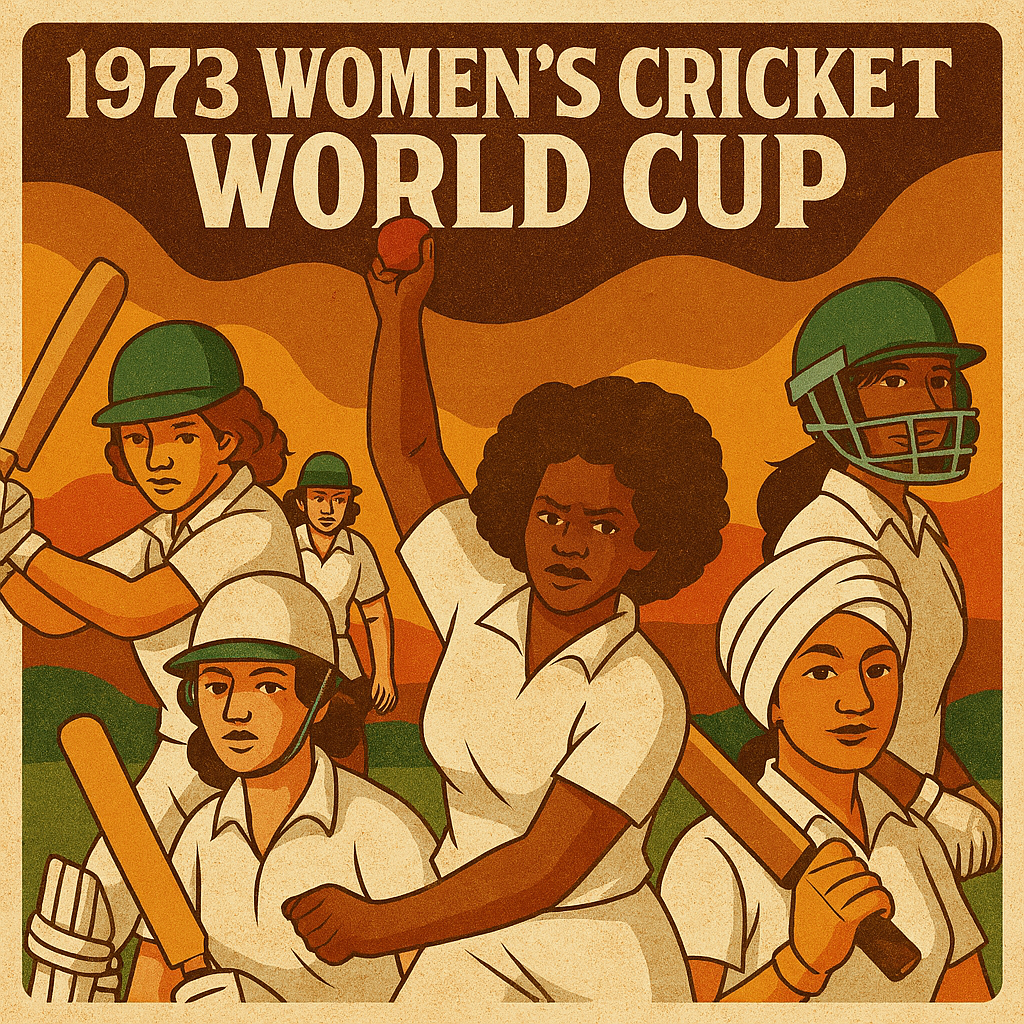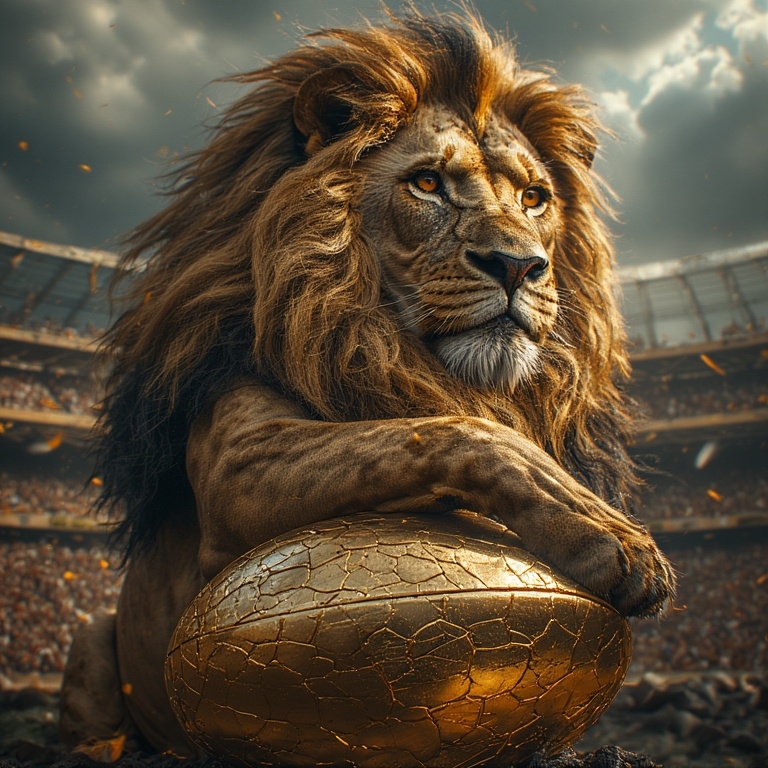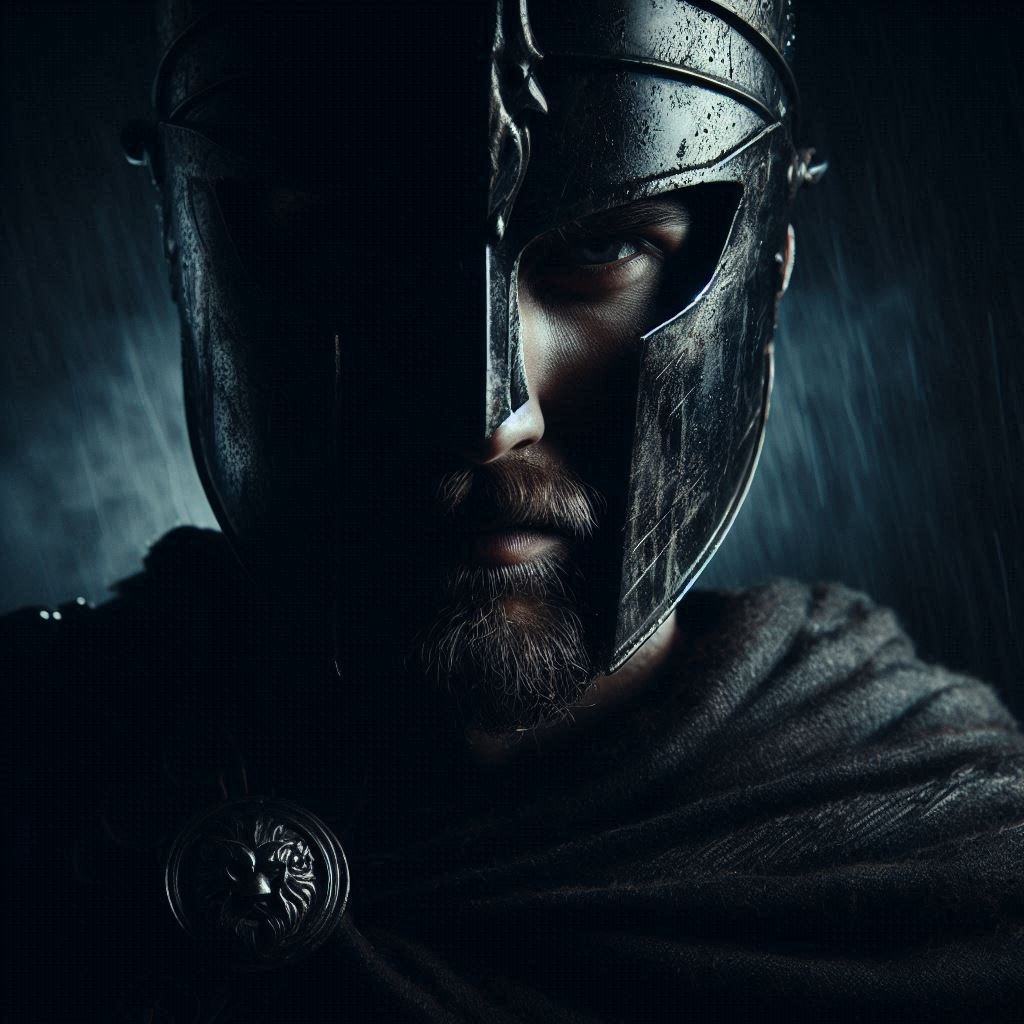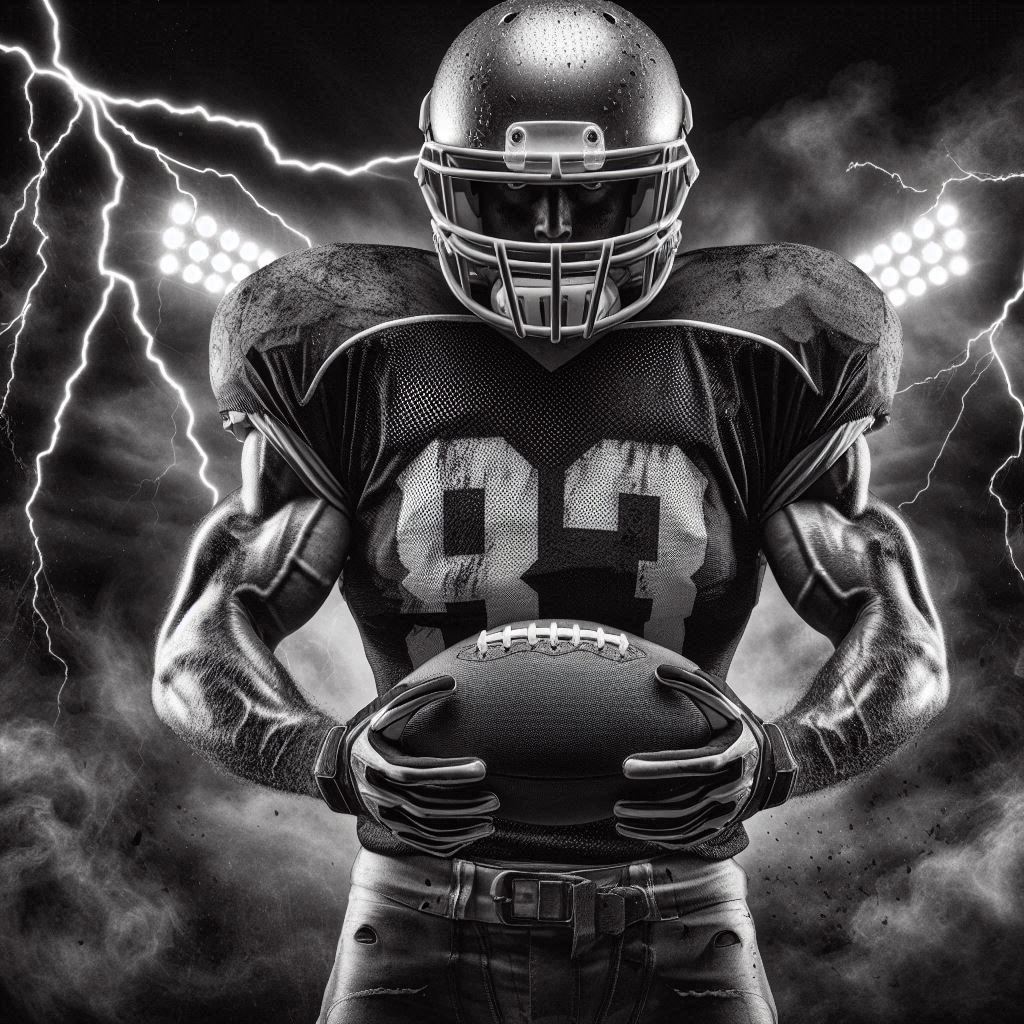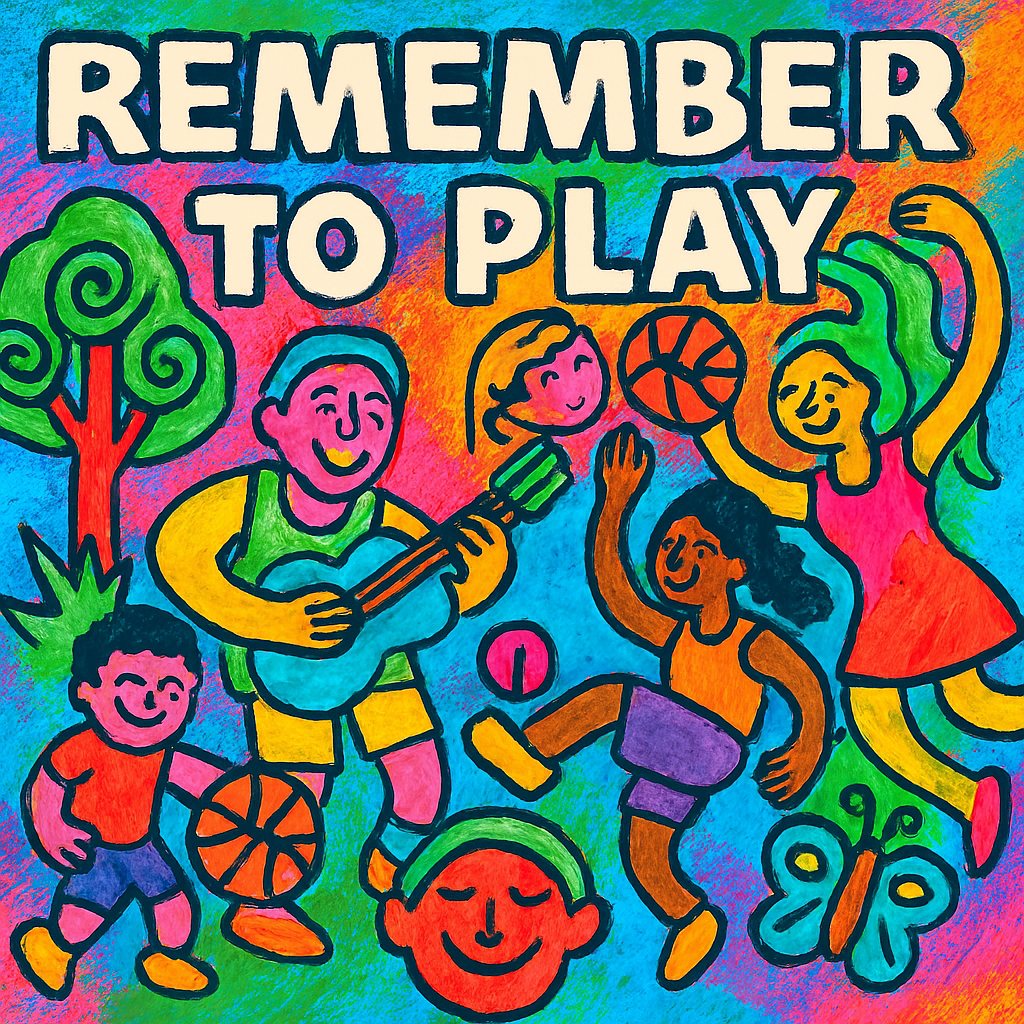NFL Draft Day – Why NFL Draft Day Matters
NFL Draft Day is the cornerstone of team-building in American professional football. It is held annually by the National Football League to allocate new talent. The event allows teams to select eligible college players for their rosters. It is structured to promote fairness and competitive balance. Teams with weaker records from the previous season receive earlier picks. The draft is not done in one day but spans seven rounds over three full days. It is broadcast nationally and attracts millions of viewers. The draft is a strategic exercise for franchises. It is also a life-changing moment for athletes. Players transition from amateur status to professional careers. The draft influences team identity and future performance. It is governed by strict rules and timelines. The event includes scouting, interviews, and medical evaluations. Cities compete to host the draft, turning it into a tourism opportunity. NFL Draft Day is not just a selection process—it is a cultural and economic spectacle.
Origins of the NFL Draft – When It Began and Why
The first NFL Draft was held on February 8, 1936. It took place at the Ritz-Carlton Hotel in Philadelphia. The draft was created to address competitive imbalance among teams. Before the draft, wealthier franchises could outbid others for top talent. Bert Bell, then owner of the Philadelphia Eagles, proposed the idea. The inaugural draft featured nine rounds and 81 total picks. Jay Berwanger, a halfback from the University of Chicago, has the piece of history as the first player selected in this draft system. He never played in the NFL due to contract disagreements. The draft was not televised in its early years. It was a closed-door meeting among team executives. Over time, the draft evolved into a public event. The number of rounds fluctuated before settling at seven in 1994. The draft became a televised spectacle in 1980. ESPN was the first network to broadcast it live. The event expanded to three days in 2010. The draft has been held annually without interruption since its inception.
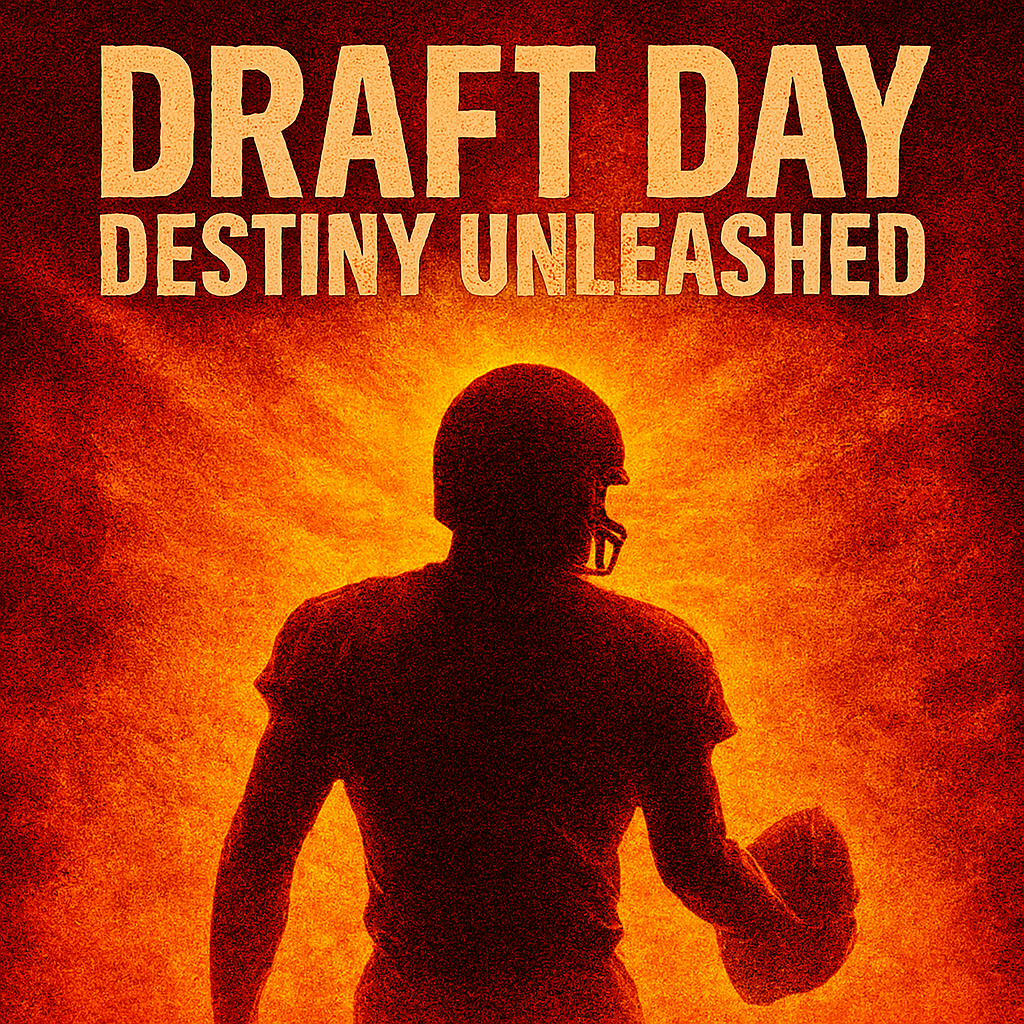
How the Draft Works – Structure and Process
The NFL Draft consists of seven rounds. Each team is assigned a draft position based on its previous season record. The team that has the worst record has normally always picked first. The Super Bowl champion picks last in each round. Teams can trade their draft picks for players or other picks. Each team has a set time limit to make its selection. The first round allows ten minutes per pick. Later rounds have shorter time limits. The draft order resets each round but maintains the same sequence. Compensatory picks are awarded to teams that lost key free agents. These picks occur at the end of rounds three through seven. The draft is overseen by the NFL Commissioner. Selections are announced live on stage. Teams submit their picks electronically to the league office. The draft is held in a different city each year. It includes fan zones, concerts, and interactive exhibits. The process is designed to be transparent and equitable.
Eligibility Requirements – Who Can Be Drafted
The Basic Requirements is that players must be at minimum three years removed out of high school to be eligible. Most candidates are college juniors or seniors. Athletes must declare for the draft by a set deadline. The NFL does not allow high school players to enter directly. International players can be eligible under specific conditions. Players must be in good academic and disciplinary standing. Medical evaluations are required for top prospects. The NFL Scouting Combine is a key part of eligibility assessment. Players can withdraw from the draft before a specific date. Once drafted, players cannot return to college football. Undrafted players can sign as free agents. Eligibility rules aim to ensure physical and mental readiness. The league prioritizes player safety and maturity. Teams conduct background checks and interviews. The process is rigorous and standardized across all franchises.
Draft Timeline – Key Dates and Milestones
The draft typically occurs in late April. It spans three consecutive days. Day one features the first round. Day two includes rounds two and three. Day three covers rounds four through seven. The NFL Scouting Combine is held in February. Pro Days take place in March and early April. Teams conduct private workouts and interviews during this period. The deadline to declare for the draft is in mid-January. The draft order is finalized after the Super Bowl. Teams submit their final draft boards in April. The draft begins on a Thursday evening. It concludes on Saturday afternoon. Rookie minicamps start shortly after the draft. Teams must sign their draft picks within a set timeframe. The timeline is tightly regulated by the league.
Table – NFL Draft Timeline Overview
| Phase | Typical Timing | Description |
|---|---|---|
| Declaration Deadline | Mid-January | Players must declare eligibility |
| Scouting Combine | Late February | Physical and mental evaluations |
| Pro Days | March–April | College-hosted workouts for scouts |
| Draft Order Finalized | Post-Super Bowl | Based on team records and playoff results |
| Draft Days | Late April (Thu–Sat) | Seven rounds over three days |
| Rookie Minicamps | Early May | First team activities for drafted players |
Scouting Combine – Physical and Mental Evaluation
The NFL Scouting Combine is a centralized event held annually in Indianapolis. It brings together over 300 draft-eligible college football players. The purpose is to evaluate athleticism, medical status, and psychological readiness. Players are invited based on performance and team interest. The combine includes standardized physical drills. These drills measure speed, strength, agility, and explosiveness. The 40-yard dash is one of the most watched events. Bench press repetitions at 225 pounds test upper body strength. Vertical and broad jumps assess lower body power. The three-cone drill and shuttle run measure agility. Medical evaluations are conducted by team physicians. Players undergo interviews with team executives and coaches. Psychological testing is used to assess decision-making and temperament. The combine lasts approximately one week. Results are shared with all 32 NFL teams for draft preparation.
Table – NFL Combine Drills and Their Purpose
| Drill | Purpose | Typical Benchmark |
|---|---|---|
| 40-Yard Dash | Measures straight-line speed | 4.4–4.6 seconds |
| Bench Press | Tests upper body strength | 20–30 reps at 225 lbs |
| Vertical Jump | Evaluates lower body explosiveness | 35–40 inches |
| Broad Jump | Assesses leg power and balance | 10–11 feet |
| 3-Cone Drill | Measures agility and change of direction | 6.8–7.2 seconds |
| Shuttle Run | Tests lateral quickness | 4.0–4.3 seconds |
Draft Order – How Teams Are Ranked
The NFL Draft order is determined by team performance in the previous season. The team with the worst regular-season record receives the first pick. The Super Bowl champion picks last in each round. Playoff teams are ranked based on how far they advanced. Ties in record are broken by strength of schedule. Strength of schedule is calculated using opponents’ win percentages. If still tied, division and conference records are used. Coin tosses are used if all other tiebreakers fail. The draft order resets each round but maintains the same sequence. Teams can trade picks and be strategic to move up or down. Trades often occur during the draft itself. Teams that qualify for compensatory selections receive additional draft picks, which are strategically placed at the conclusion of rounds three through seven to offset the loss of key free agents from the previous season.
These are awarded to teams that lost more free agents than they gained. The league uses a proprietary formula to calculate compensatory picks. The draft order is finalized after the Super Bowl. It is published by the NFL in early spring.
Rookie Contracts – Terms and Structure
Rookie contracts in the NFL are governed by a standardized wage scale. All drafted players sign four-year contracts. First-round picks may include a fifth-year team option. Salaries are determined by draft position. Higher picks receive larger contracts and signing bonuses. Signing bonuses are guaranteed and paid upfront. Base salaries increase each year of the contract. Performance incentives may be included. Contracts are subject to the Collective Bargaining Agreement. This agreement is negotiated between the NFL and the players’ union. Undrafted players can negotiate freely with teams. Rookie contracts must be signed before training camp. Teams can void contracts for violations of conduct policies. Players must pass physicals before contracts are finalized. Agents represent players during negotiations. The NFL Players Association monitors contract compliance.
Table – Rookie Contract Structure by Draft Position
| Draft Position | Average Total Value | Signing Bonus | Contract Length | Fifth-Year Option |
|---|---|---|---|---|
| Top 5 Picks | $30–40 million | $20–25 million | 4 years | Yes |
| Picks 6–20 | $15–25 million | $10–15 million | 4 years | Yes |
| Picks 21–32 | $10–15 million | $6–10 million | 4 years | Yes |
| Rounds 2–3 | $3–6 million | $1–3 million | 4 years | No |
| Rounds 4–7 | $1–2 million | $100–500K | 4 years | No |
| Undrafted Free Agents | Varies | Minimal | 3 years | No |
Trades and Strategy – How Teams Move Up or Down
NFL teams can trade draft picks before or during the draft. Trades are used to move up for a desired player or down to gain more assets. Picks can be exchanged for other picks, players, or future draft selections. Trade negotiations often begin weeks before the draft. Some trades are finalized on draft day itself. Teams use analytics to assess trade value. The NFL uses a draft value chart to guide negotiations. Each pick is assigned a numerical value. Higher picks carry more weight in trade calculations. Teams may trade up to secure a franchise quarterback. Others trade down to accumulate multiple picks. Trades must be approved by the league office. The commissioner announces trades live during the event. Some trades involve conditional picks based on player performance. Strategic trading can reshape a team’s future. It is one of the most dynamic aspects of the draft process.
Table – Sample Draft Trade Value Chart
| Pick Number | Assigned Value |
|---|---|
| 1 | 3,000 |
| 5 | 1,700 |
| 10 | 1,300 |
| 20 | 850 |
| 32 | 590 |
| 50 | 400 |
| 100 | 100 |
| 150 | 30 |
| 200 | 10 |
Undrafted Free Agents – Opportunities Beyond the Draft
Not all eligible players are selected during the draft. Those who go undrafted become free agents. Teams can sign undrafted players immediately after the draft ends. These signings are often rapid and competitive. Some undrafted players become long-term starters. Others contribute on special teams or practice squads. Teams scout undrafted talent throughout the college season. Signing bonuses for undrafted players are typically minimal. Contracts are usually shorter and less guaranteed. Players must still pass physicals and background checks. Undrafted players attend rookie minicamps and training camp. They compete for roster spots alongside drafted players. Coaches value effort and adaptability in these signings. Some undrafted players outperform higher draft picks. The process offers a second chance for overlooked talent. It reflects the unpredictable nature of player development.
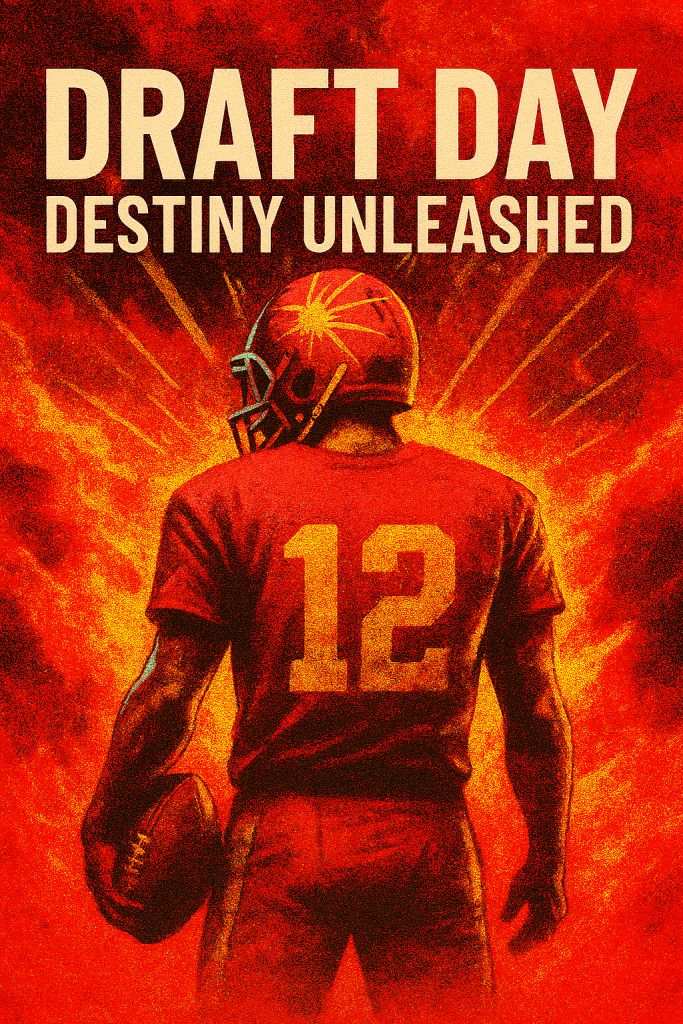
Fan Engagement – How the Public Participates
NFL Draft Day has become a major fan event. Cities host large-scale festivals around the draft. Fans attend live broadcasts and player announcements. Interactive zones offer games, merchandise, and photo opportunities. The draft is broadcast on multiple networks and platforms. Social media plays a key role in fan engagement. Fans follow mock drafts and expert predictions. Many participate in fantasy football based on draft outcomes. Team merchandise sales spike during the draft. Fans cheer or boo picks based on team loyalty. Some travel across the country to attend in person. The draft creates emotional moments for families and communities. Players often share their reactions live on social media. The event fosters a sense of connection between fans and teams. It is one of the most anticipated dates on the NFL calendar.
Table – Fan Engagement Features at NFL Draft Events
| Feature | Description |
|---|---|
| Live Broadcasts | Real-time coverage on TV and streaming platforms |
| Fan Zones | Interactive areas with games and exhibits |
| Player Meet-and-Greets | Opportunities to meet drafted athletes |
| Merchandise Booths | Team gear and collectibles for sale |
| Social Media Integration | Live reactions, hashtags, and fan polls |
| Concerts and Entertainment | Music performances and celebrity appearances |
Media Coverage – How the Draft Is Broadcast
NFL Draft Day is one of the most widely covered sports events in the United States. Major networks like ESPN and NFL Network provide live coverage. The event is broadcast across television, radio, and digital platforms. Coverage begins weeks before the draft with mock drafts and analysis. On draft day, anchors provide real-time updates and commentary. Reporters interview players, coaches, and team executives. Analysts break down team needs and pick strategies. The broadcast includes highlight reels of college performances. Graphics display draft order, trades, and player statistics. Social media platforms stream live reactions and behind-the-scenes footage. Podcasts and blogs offer post-draft analysis. Media coverage extends to international audiences. The draft is translated and subtitled for global viewers. Ratings for the draft rival those of playoff games. The media plays a central role in shaping public perception of draft success.
Table – Media Platforms Covering NFL Draft Day
| Platform | Coverage Type | Audience Reach |
|---|---|---|
| ESPN | Live TV, digital streaming | National and global |
| NFL Network | Live TV, team analysis | Dedicated NFL audience |
| ABC | Primetime coverage | General sports fans |
| SiriusXM Radio | Audio commentary | Mobile and car users |
| YouTube | Highlights and reactions | Global digital users |
| Twitter/X | Live updates and clips | Real-time engagement |
Team Analytics – Data-Driven Draft Decisions
NFL teams rely heavily on analytics during the draft. Data is used to evaluate player performance and potential. Metrics include speed, strength, agility, and game statistics. Teams use predictive models to assess injury risk. Algorithms help compare players across positions and schools. Historical data informs decisions about positional value. Analytics guide trade decisions and draft board rankings. Teams employ data scientists and performance analysts. Software tools visualize player comparisons and trends. GPS tracking data is used to assess movement efficiency. Psychological profiles are integrated into decision models. Teams simulate draft scenarios using statistical inputs. Data helps identify undervalued prospects. Analytics reduce bias in scouting reports. The use of data has transformed how teams build rosters.
Historical Draft Busts – When Picks Don’t Pan Out
Not all high draft picks succeed in the NFL. A draft bust refers to a player who fails to meet expectations. Reasons include injuries, poor performance, or off-field issues. Some players struggle to adapt to the professional level. Others face coaching changes or system mismatches. First-round busts are especially costly for teams. They can set back franchise development for years. Media scrutiny intensifies when top picks underperform. Teams conduct postmortems to understand what went wrong. Draft busts often lead to changes in scouting strategy. Some busts find success with other teams later. Others retire early or shift to non-playing roles. The unpredictability of player development is a constant challenge. Draft busts are part of the risk inherent in talent selection. They remind teams of the importance of due diligence. Even with data and scouting, outcomes remain uncertain.
Table – Notable NFL Draft Busts and Their Impact
| Player Name | Draft Year | Pick Number | Team | Outcome |
|---|---|---|---|---|
| JaMarcus Russell | 2007 | 1st overall | Oakland Raiders | Released after 3 seasons |
| Ryan Leaf | 1998 | 2nd overall | San Diego | Career derailed by injuries |
| Trent Richardson | 2012 | 3rd overall | Cleveland | Traded after poor performance |
| Tony Mandarich | 1989 | 2nd overall | Green Bay | Never made Pro Bowl |
| Johnny Manziel | 2014 | 22nd overall | Cleveland | Off-field issues ended career |
Symbolic Meaning – What the Draft Represents
NFL Draft Day represents far more than roster construction. It symbolizes opportunity, transition, and the pursuit of excellence. For players, it marks the culmination of years of training and sacrifice. It is the moment when amateur status gives way to professional recognition. For teams, the draft is a strategic reset. It allows franchises to rebuild, reinforce, or redefine their identity. The draft reflects meritocratic ideals—performance and potential drive selection. It is a celebration of athletic achievement and perseverance. The event also highlights the business side of sports. Contracts, trades, and negotiations are central to the process. The draft connects college football to the professional ecosystem. It reinforces the NFL’s role in American culture and media. The event is deeply emotional for families and communities. It showcases the human stakes behind athletic performance. The draft is both a spectacle and a rite of passage. It is one of the most symbolically rich events in global sport.
Table – Symbolic Dimensions of NFL Draft Day
| Symbolic Theme | Description |
|---|---|
| Opportunity | Players gain access to professional careers and financial stability |
| Transition | Marks the shift from college athlete to professional competitor |
| Meritocracy | Selection based on performance, potential, and readiness |
| Identity Formation | Teams reshape their future and public image through draft choices |
| Emotional Milestone | Families celebrate years of effort and sacrifice culminating in selection |
| Cultural Ritual | Annual tradition that unites fans, teams, and media |
| Business Activation | Launches contract negotiations, sponsorships, and merchandise sales |
| Media Spectacle | Generates national attention and multi-platform coverage |
| Legacy Building | Draft classes become part of team history and folklore |
| Hope and Renewal | Offers fresh starts for players and franchises alike |
Cultural Legacy – How the Draft Shapes Football History
NFL Draft Day plays a pivotal role in shaping the cultural legacy of American football. Each draft class becomes part of the sport’s historical narrative. Legendary players are often remembered by the year and pick they were selected. Hall of Fame careers frequently begin with a draft announcement. The draft reflects changing trends in athleticism, strategy, and positional value. It documents the evolution of scouting and analytics. Iconic draft moments are replayed in documentaries and retrospectives. Some picks become symbols of redemption or resilience. Others represent missed opportunities and cautionary tales. The draft also mirrors broader societal shifts in representation and inclusion. Milestones such as the first openly LGBTQ+ draftee or first HBCU pick carry cultural weight. The draft is archived in team media guides and league databases. Fans collect memorabilia tied to specific draft years. Coaches and executives are judged by their draft track records. The legacy of each draft extends across decades. It is a living record of football’s growth and transformation.
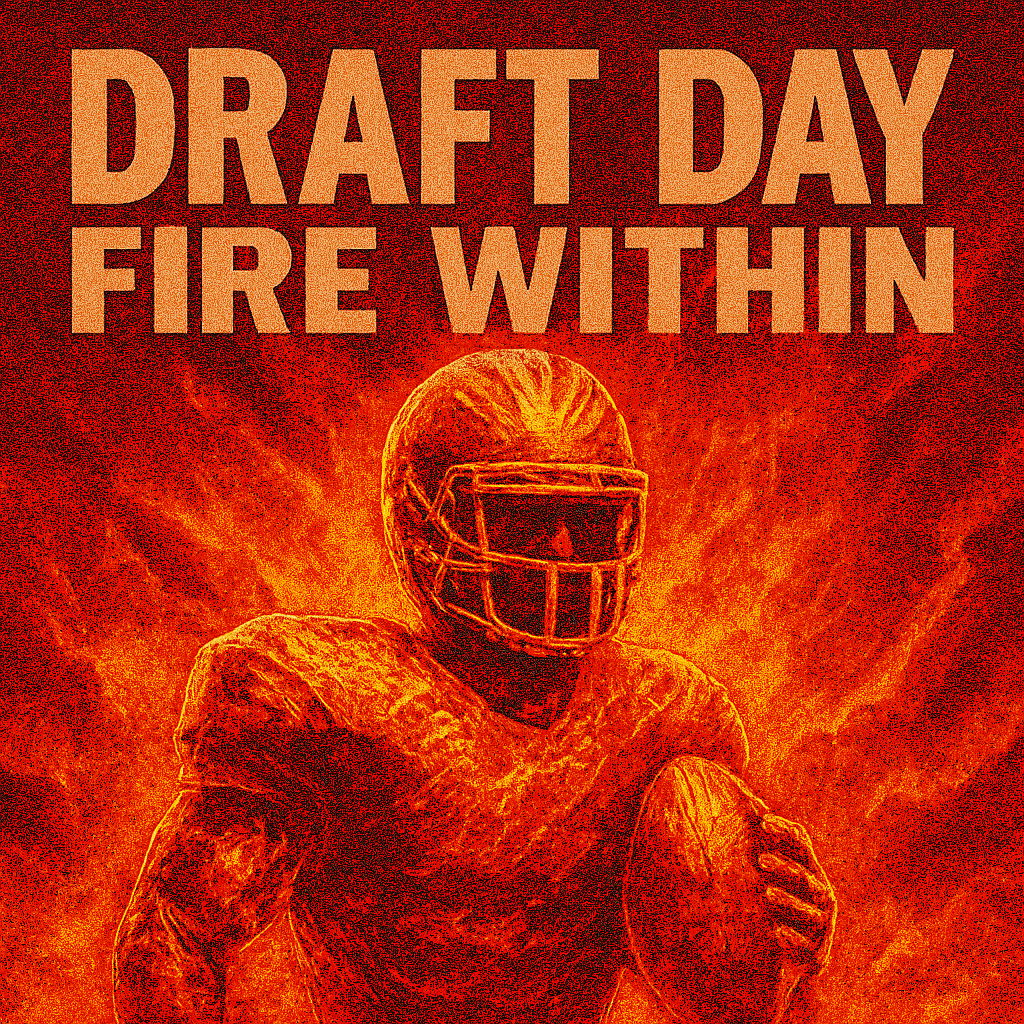
Table – Cultural Milestones in NFL Draft History
| Milestone | Year | Description |
|---|---|---|
| First NFL Draft | 1936 | Introduced structured player selection |
| First televised draft | 1980 | Brought draft into national spotlight |
| First woman to announce a pick | 2015 | Symbol of expanding representation |
| First openly gay draftee | 2014 | Michael Sam selected by St. Louis Rams |
| First virtual draft | 2020 | Held remotely due to global pandemic |
| First HBCU player selected | 1948 | Tank Younger drafted by Los Angeles Rams |
| First draft held outdoors | 2015 | Chicago hosted open-air event |
| First draft in Las Vegas | 2022 | Integrated entertainment and tourism |
Psychological Pressure – Mental Demands of Draft Day
NFL Draft Day places immense psychological pressure on athletes. Players face public scrutiny and media speculation. Many experience anxiety about where they will be selected. The uncertainty can affect sleep, focus, and emotional regulation. Athletes are often surrounded by family and agents during the event. Some players wait hours or days to hear their name called. The draft is a televised spectacle, amplifying emotional stakes. Players must manage expectations and disappointment in real time. Mental resilience is a key trait evaluated by teams. Interviews often include psychological profiling and stress tests. Athletes are coached on how to handle media questions. Social media reactions can be both supportive and critical. The draft can trigger imposter syndrome or performance pressure. Mental health professionals are increasingly involved in draft preparation. The psychological impact of draft day can shape early career outcomes.
Table – Common Psychological Stressors on NFL Draft Day
| Stressor | Description |
|---|---|
| Uncertainty of Selection | Not knowing when or if a player will be drafted |
| Public Scrutiny | Media and fan analysis of performance and character |
| Family Expectations | Pressure to succeed for loved ones |
| Financial Implications | Anxiety over contract size and future earnings |
| Social Media Feedback | Real-time praise or criticism from the public |
| Comparison to Peers | Watching others get drafted earlier |
| Career Transition | Moving from college to professional environment |
Economic Impact – Financial Dimensions of the Draft
NFL Draft Day has significant economic implications. Teams invest millions in scouting and analytics. Draft picks are cost-controlled assets under rookie wage scales. High picks receive large signing bonuses and guaranteed contracts. Undrafted players earn less but can still secure multi-year deals. The draft influences team salary cap strategies. Franchises use draft success to boost merchandise sales. Cities hosting the draft benefit from tourism and media exposure. Hotels, restaurants, and local vendors see increased revenue. The NFL monetizes the draft through sponsorships and advertising. Media rights generate substantial income for networks. Players often sign endorsement deals after being drafted. Agents earn commissions based on contract value. The draft affects fantasy football markets and betting lines. Economic ripple effects extend to apparel, memorabilia, and digital content. The draft is both a sporting and financial event.
Table – Economic Elements of NFL Draft Day
| Element | Description |
|---|---|
| Rookie Contracts | Structured by draft position and collective bargaining rules |
| Signing Bonuses | Guaranteed upfront payments for drafted players |
| Host City Revenue | Tourism and local business boost during draft week |
| Sponsorship Deals | NFL partners with brands for event visibility |
| Media Rights | Networks pay for exclusive coverage |
| Agent Commissions | Percentage of player contracts negotiated |
| Merchandise Sales | Team gear linked to new draft picks |
| Endorsement Opportunities | Players sign with brands post-selection |
Symbolic Closure – What the Draft Leaves Behind
NFL Draft Day concludes with more than just completed rosters. It leaves behind stories of triumph, heartbreak, and transformation. Each pick becomes part of a team’s evolving narrative. Players carry the emotional weight of their selection into training camp. Families reflect on the journey that led to this moment. Coaches begin integrating new talent into strategic plans. Fans debate the success of their team’s choices. Media outlets publish grades and projections. The draft sets the tone for the upcoming season. It also marks the end of one chapter and the beginning of another. Symbolically, the draft is a rite of passage. It affirms the values of perseverance, preparation, and potential. The event is archived in team history and player biographies. Draft Day rituals become personal milestones. The final pick, often called “Mr. Irrelevant,” carries its own legacy. Closure comes not from the last name announced, but from the collective experience. The draft leaves behind a blueprint for the future.
Table – Symbolic Outcomes of NFL Draft Day
| Outcome | Description |
|---|---|
| Team Identity | Draft choices reflect strategic direction |
| Player Legacy | Selection becomes part of career narrative |
| Family Milestone | Emotional closure for years of support and sacrifice |
| Fan Sentiment | Hope, excitement, or frustration based on picks |
| Media Narrative | Stories and analysis shape public perception |
| Historical Record | Draft archived in team and league databases |
| Cultural Ritual | Annual tradition with symbolic weight |
Conclusion – NFL Draft Day as Blueprint, Mirror, and Milestone
NFL Draft Day is more than a televised selection process. It is a blueprint for team-building, a mirror of cultural values, and a milestone in personal and professional transformation. Every pick reflects years of scouting, strategy, and sacrifice. Every announcement carries the weight of dreams fulfilled or deferred. The draft is where analytics meet emotion, where legacy begins, and where uncertainty becomes opportunity. It is a ritual of renewal for franchises and a rite of passage for athletes. From war rooms to living rooms, it connects executives, families, and fans in a shared moment of anticipation. The draft archives the evolution of football itself—its shifting priorities, expanding representation, and deepening emotional resonance. It is a stage where identity is forged and futures are rewritten. Whether celebrated for its spectacle or studied for its structure, NFL Draft Day remains one of the most symbolically rich events in global sport. It is not just about who gets picked—it is about what the pick means, and what comes next.
Join the Discussion – What Does the Draft Mean to You?
Whether you’re a lifelong fan, a first-time viewer, or a student of sport and culture—NFL Draft Day invites reflection. What moments moved you? Which picks surprised you? How do you see the draft shaping the future of football, identity, and inclusion?
